Below is a list of education labs and activities created specifically for Unistellar eVscope users. Even though these materials were created for eVscopes, many of them may also be useful to any science/astronomy teacher or student with or without a telescope.
The materials below are available to download as a PDF or used as a Googlae document. However, many educators may find using them as a Google doc to be most effective since as a Google doc you can choose to “File - Make a copy” of the document and could then edit it to work best for your students or learning situation. Additionally, as a Google doc students may also make their own copy and complete some of the document on their smartphones or tablets during an eVscope observation. Many of the K-12 teachers that use Google Classroom will find these to be easily integrated within that platform.
SETI Institute Created Unistellar Education Activities
Unistellar Educational Tours of the Cosmos
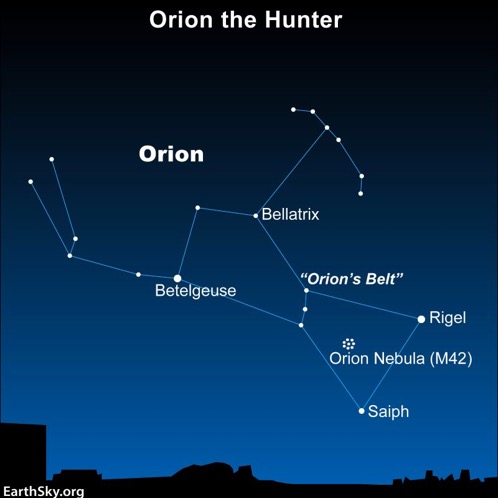
Our “Educational Tours of the Cosmos” are a newly developed activity that will be adapted and released throughout the year as the objects viewable change with our seasons. We hope that these activities will serve as an exciting and inspirational way for students to learn about the universe as they observe the objects they are learning about.
Our latest tour, for October through December, is best utilized over several nights of observing. In the Northern Hemisphere edition, this fall tour will have you exploring celestial objects such as Andromeda (both the galaxy and the constellation) and the spooky Phantom Galaxy, along with clusters and nebulae. You will also explore exotic objects like black holes and ponder what actions you would take had you been the main character in the movie Interstellar. In the Southern Hemisphere edition, you will explore all our nearest galactic neighbors, the Andromeda Galaxy and the Large and Small Magellanic Clouds, as well as gaze up at nebulae and globular clusters. You will even explore the meaning and importance of Indigenous and Aboriginal Astronomy in our first Tour of the Cosmos for the Southern globe!
This activity asks for observed images to be pasted into the worksheet (easy for eVscopes) so it works best when used as a Google doc.
Google doc links for activity:
Unistellar Meteor Showers Education Activity
Comets, Perseids, and the Drake Equation [2022 Edition]
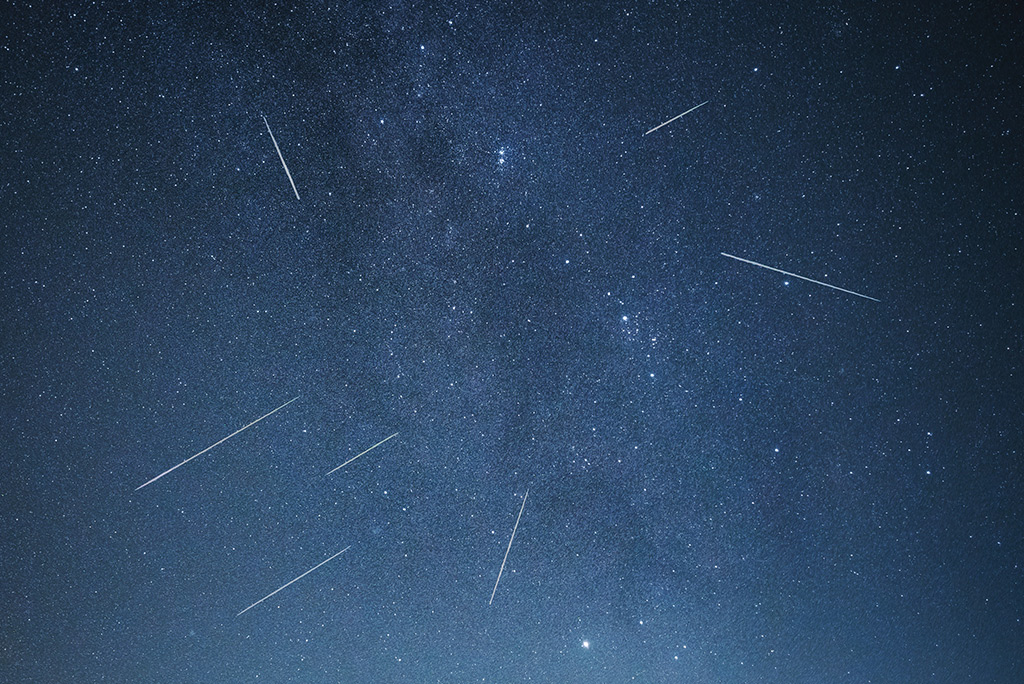
This activity focuses on the Perseids meteor shower and explores the relationship between these showers and comets. Participants will observe the comet C/2022 E3 (ZTF) (visible to the Northern Hemisphere) and create their own Solar System model to understand how comet trajectories can produce a meteor shower. In addition, this activity guides students to explore our cosmic fragility by considering the effects of a cometary impact.
The Perseids meteor shower peaks this year (2022) from August 11-13, and although this may be the best time to use this activity, comet C/2022 E3 will be visible until next year. We encourage educators, especially those in the Southern Hemisphere, to follow the instructions at the top of this page and adapt the activity to any comet or meteor shower relevant to the time this activity is used.
Google doc link for activity:
Unistellar eVscope Education Introductory Activity:
Quick Getting Started & Practicing Observation Skills
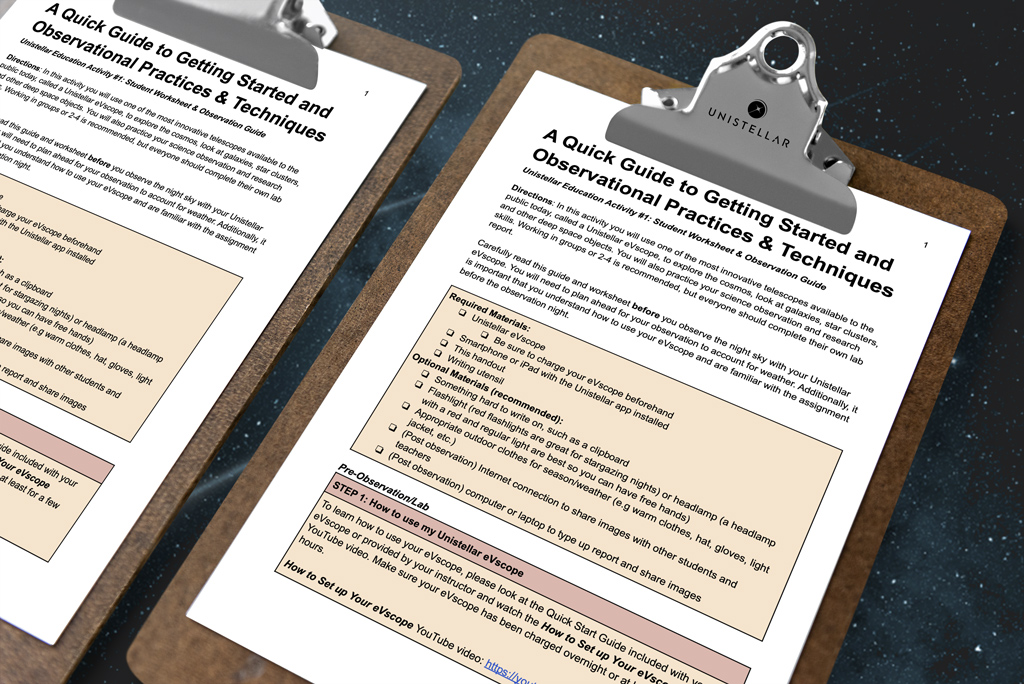
This is an activity to introduce students to the eVscope and how to use it. It also encourages students to start practicing their observation and claim, evidence, reasoning (CER) skills. Teacher notes are provided for this activity as a starter, but not for the others since they would be similar in nature and educators may wish to alter activities based on their own needs, creativity, and interest.
Google doc links for activity:
Unistellar Science Labs
Our science labs are meant to supplement the Unistellar network’s citizen science opportunities so students can learn science by doing science. The Unistellar and the SETI Institute partnership has helped to develop exciting citizen science observing opportunities for the Unistellar eVscope. This includes observing transiting exoplanets, occulting Trojan asteroids for helping NASA’s Lucy mission, and tracking near-Earth asteroids to help protect the Earth from a future asteroid impact.
The labs are available with stock data we have from some of the best Unistellar eVscope observations, but can easily be interchanged with data collected by you and your students. If you or your students conduct your own observation and would like the raw data, or help in processing the data in the best format to work for your class, we will help you do that to make these labs customized for your learning experiences.
There is research that shows that project-based learning (PBL) citizen science can help motivate students and improve their learning experience. This is especially impactful when students are in charge of their own investigations, and most effective when students can lead these citizen science investigations with their own “loaned out” or “teacher supervised” eVscope.
Owners of Unistellar eVscopes can communicate directly with our Unistellar science and education team on our designated Slack channel to learn more and get personalized support.
To join the Unistellar Slack channel (owners of eVscopes only), or to learn about Unistellar citizen science events and look at the current observation opportunities (available to all), please visit https://unistellaroptics.com/citizen-science/
Unistellar Exoplanet Lab
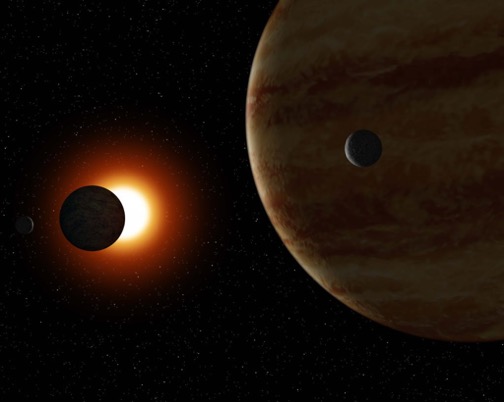
This Unistellar science lab uses data taken from Unistellar eVscope citizen scientists of the exoplanet, HD 189733b. In this lab, students will learn about exoplanets and how they are discovered by analyzing real exoplanet data and making their own transit light curve. Students will also determine characteristics of the exoplanet (e.g. the planet’s size) and hypothesize what else they could learn from collecting more data.
Teachers and students who want to partake in their own exoplanet investigations can use this same lab template and our team will provide you with your data prepared best for your particular classroom use (processed or raw data). Please connect with us on our Unistellar citizen science Slack channel for this option.
Google doc links for activity:
Unistellar Spectroscopy Lab
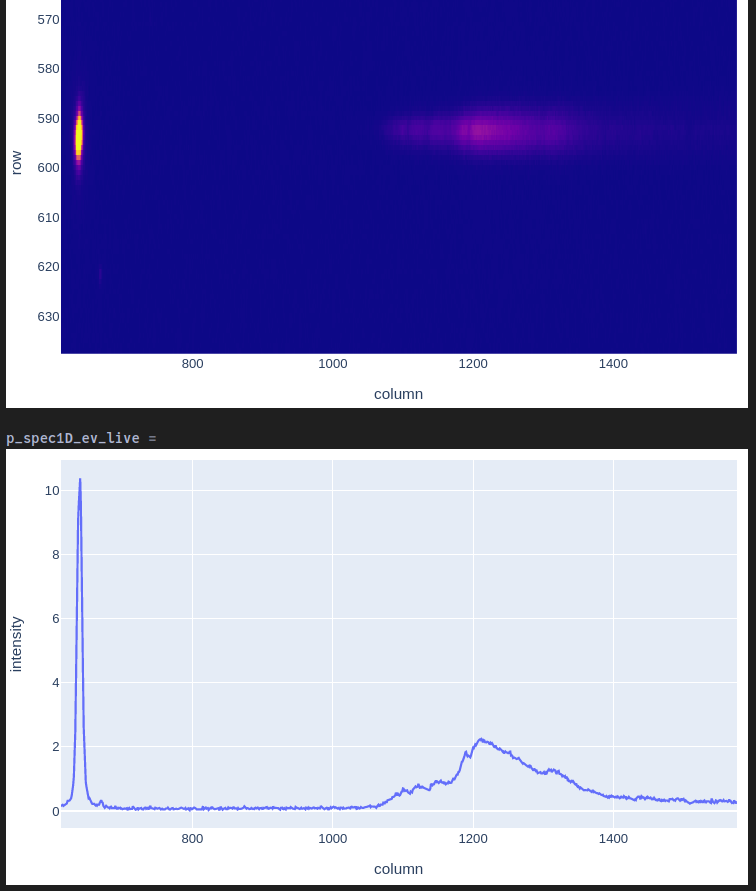
This Unistellar science lab introduces students to the principles behind collecting and analyzing astronomical spectra. By using real data collected by Unistellar eVscopes, students will gain hands-on experience with foundational concepts in this field, including image processing, array/matrix operations, and wavelength calibration, which are used to characterize the chemical composition of astrophysical sources.
Like our other Unistellar labs, the spectroscopy lab will include stock data from the best past Unistellar eVscope citizen science observations, but can also be easily adapted to be used with data collected by you and your students.
Link to analysis notebook:
Unistellar Asteroid Occultation Lab (currently in development)
This lab (currently in development) will walk students through how asteroid occultations work, as well as help them to analyze their occultation light curve data to determine the size and shape of asteroids.
Like the Unistellar exoplanets lab, the asteroid occultation lab will also include stock data from the best past Unistellar eVscope citizen science observations, but will also be easily adapted to be used with data collected by you and your students.
Unistellar Asteroid Parallax Lab (currently in development)
This lab (currently in development) will allow your students to understand one of the first rungs on the cosmic distance ladder, stellar parallax. Students will learn about the concept of stellar parallax and apply what they learn by using real data collected by Unistellar eVscopes to determine the distance of a recently observed near-Earth asteroid.
Like our other Unistellar labs, the parallax lab will also include stock data from the best past Unistellar eVscope citizen science observations, but will also be easily adapted to be used with data collected by you and your students.
Unistellar Planetary Defense Lab (in development soon)
This lab (currently in development) will introduce students to planetary defense, which is an important scientific and civil initiative to protect Earth from future space impacts. By using real data collected by Unistellar eVscopes, students will analyze asteroid light curves to determine important characteristics of the asteroid.
Like our other Unistellar labs, the planetary defense lab will also include stock data from the best past Unistellar eVscope citizen science observations, but will also be easily adapted to be used with data collected by you and your students.
Education Activities Created by UCAN Professors
Community college professors in UCAN have been working on developing their own Unistellar eVscope activities for their astronomy classes. Below is a list of currently created activities by our network. UCAN participants: please be encouraged to contact UCAN administrators to have your education activity added too!
- Palomar College (San Marcos, CA) - UCAN Member, Astronomy Professor Scott Kardel
Activity created by Prof. Kardel: Identifying Astronomical Objects with an eVscope (Feb/March Edition): DOWNLOAD [48KB] - Alamo Colleges/San Antonio College (San Antonio, TX) - UCAN Member, Astronomy Professor David Wood
Activity created by Prof. Wood: Pleiades-Moon eVscope Activity [Updated November 2022] - DOWNLOAD [139KB]
More UCAN member created activities will be added soon!
